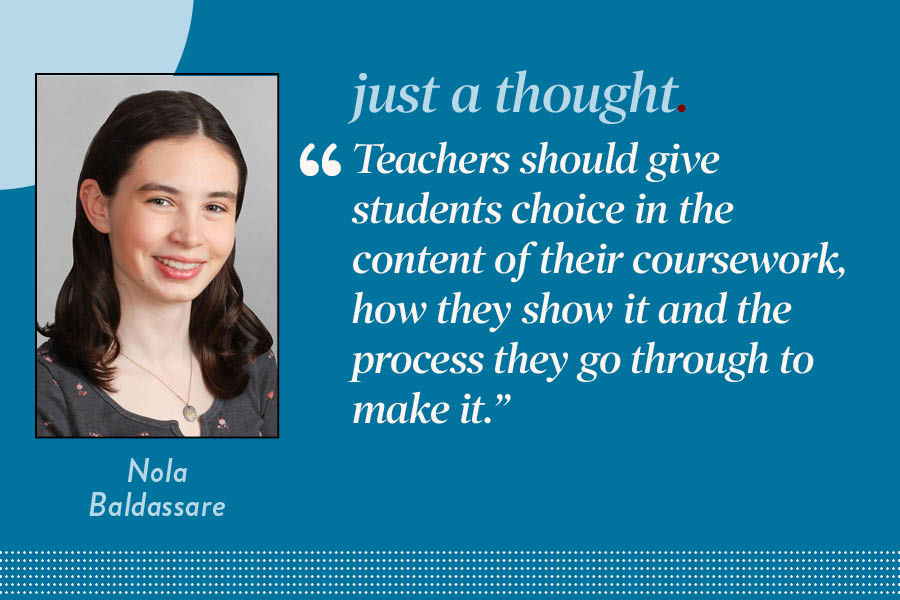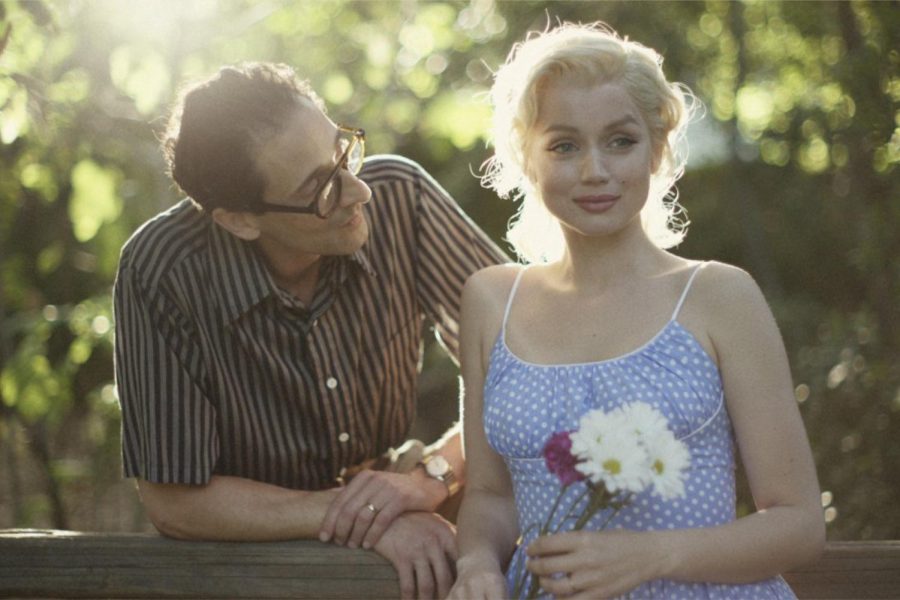‘Blonde’ fails to depict Marilyn Monroe’s life, reinforces stereotypes
Netflix
Despite a star-studded cast list and a significant budget, “Blonde” ultimately takes too many inaccurate, sexist creative liberties in documenting Marilyn Monroe’s life.
October 31, 2022
In an Old Western saloon, Kay Weston sits on top of a piano: legs crossed, in a tight-fitting yellow dress as a group of cowboys watch her sing “River of No Return.” A golden haze illuminates her, drawing the 1954 audience in to see yet another performance from the iconic Marilyn Monroe.
A recent storm of controversy surrounds Netflix’s “Blonde,” a fictitious biopic of Marliyn Monroe that focuses on suffering as a result of stardom. Despite Ana de Armas’ beautiful performance depicting Ms. Monroe through the actress’s early life to her eventual death in 1962, the film ultimately fails to represent Ms. Monroe fairly. As opposed to highlighting Ms. Monroe’s career in films such as “River of no Return” or “The Seven Year Itch,” the adaption harmfully misrepresents sexual assault and pushes an anti-abortion rhetoric by exploiting the legacy of Ms. Monroe.
Even with the careful attention paid to cinematography and casting, intentional creative liberties are added to the film, often without historical evidence, which leads critics to claim that the film reinforces misogynistic stereotypes while exploiting Ms. Monroe’s likeness and character.
Planned Parenthood found it problematic that director Andrew Dominik would depict Ms. Monroe’s two illegal abortions, which were preformed without her will. The abortions are a continuous and traumatizing thread throughout the film. Various scenes contribute to common misconceptions about reproductive health and Planned Parenthood believes Mr. Dominik’s decision is a step in the wrong direction.
Many see “Blonde” as a current example of glamorizing female suffering and exploiting their stories even after death. Content Creator Mina Le comments on society’s continued fascination with the life of Monroe in a YouTube video entitled, “let’s discuss: the obsession with Marilyn Monroe,” in which she critiques the way the world has idolized Monroe, with many people knowing who she is, without having seen any of her films.
The fascination with icons like Ms. Monroe is similar to Amy Winehouse and Princess Diana, who ever after their death their suffering is glamourized through the male gaze.
In a 1975 essay, Laura Mulvey, a feminist flim theorist, explains the phememon of the “Male Gaze Theory” in Hollywood.
“In their traditional exhibitionist role women are simultaneously looked at and displayed, with their appearance coded for strong visual and erotic impact so that they can be said to connote to-be-looked-at-ness,” Ms. Mulvey wrote.
Ms. Le argues that by disregarding Ms. Monroe’s acting abilities even by her own co-stars, she continued to be viewed as simply a model, and someone that only had an audience because of her looks.
While the current portrayal of female characters by the media is problematic and considered inferior in importance to the roles played by men, Ms. Mulvey offers some hope as Hollywood continues to reinvent itself and evolve from traditional film.
“The voyeuristic scopophilic look that is a crucial part of the traditional filmic pleasure can itself be broken down,” Ms. Mulvey wrote. “Women, whose image has continually been stolen and used for this end, cannot view the decline of the traditional film form with anything much more than sentimental regret.”
Even with beautifully executed recreations of scenes evoking the memory of Marilyn Monroe, “Blonde” tragically misrepresents her. “Blonde” could have strived to pull Ms. Monroe out of the male gaze and focus on what made her an incredible actress, as opposed to fictionalizing the abuse and trauma she experienced as a result of Hollywood and tarnishing her legacy.




























































